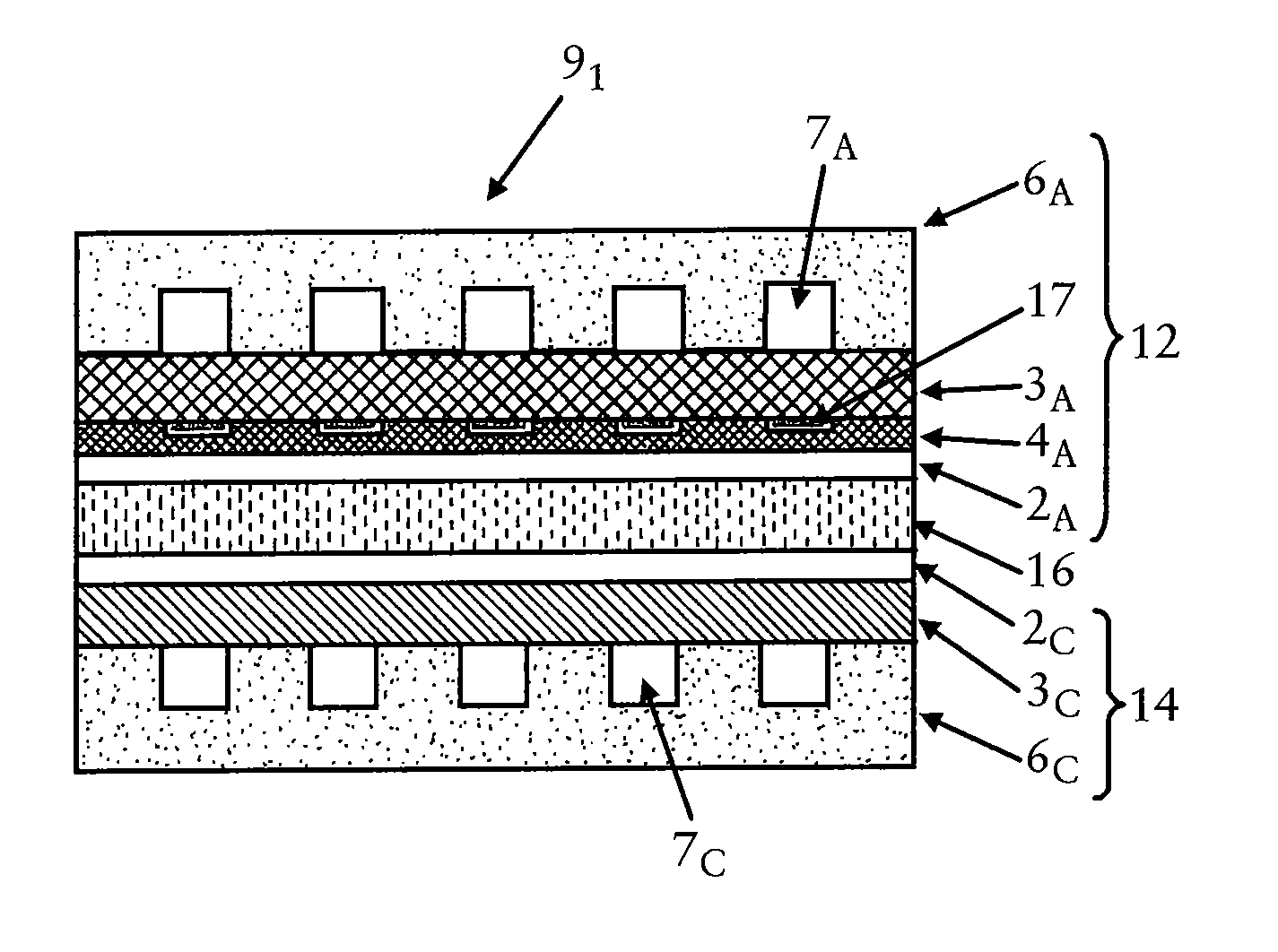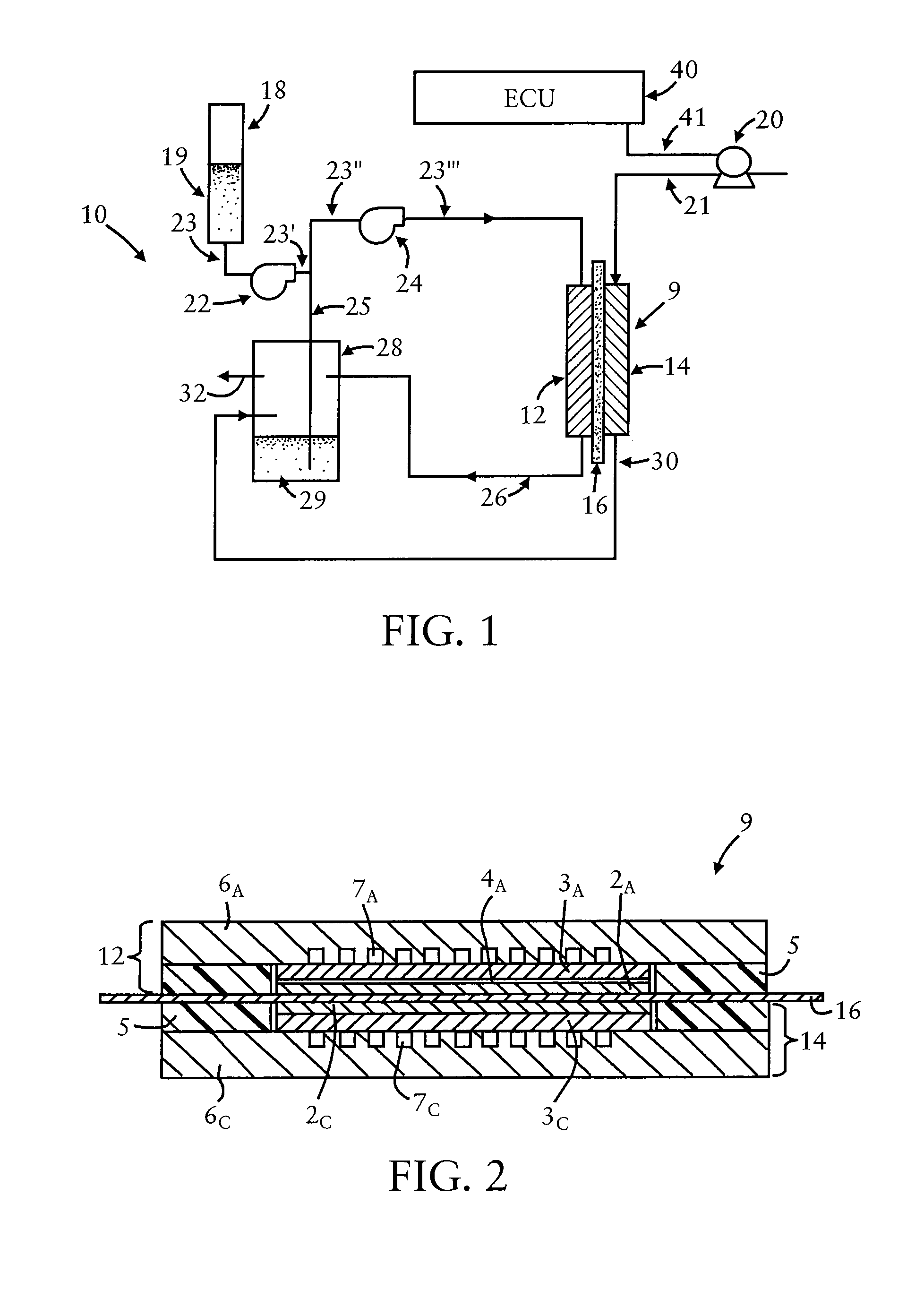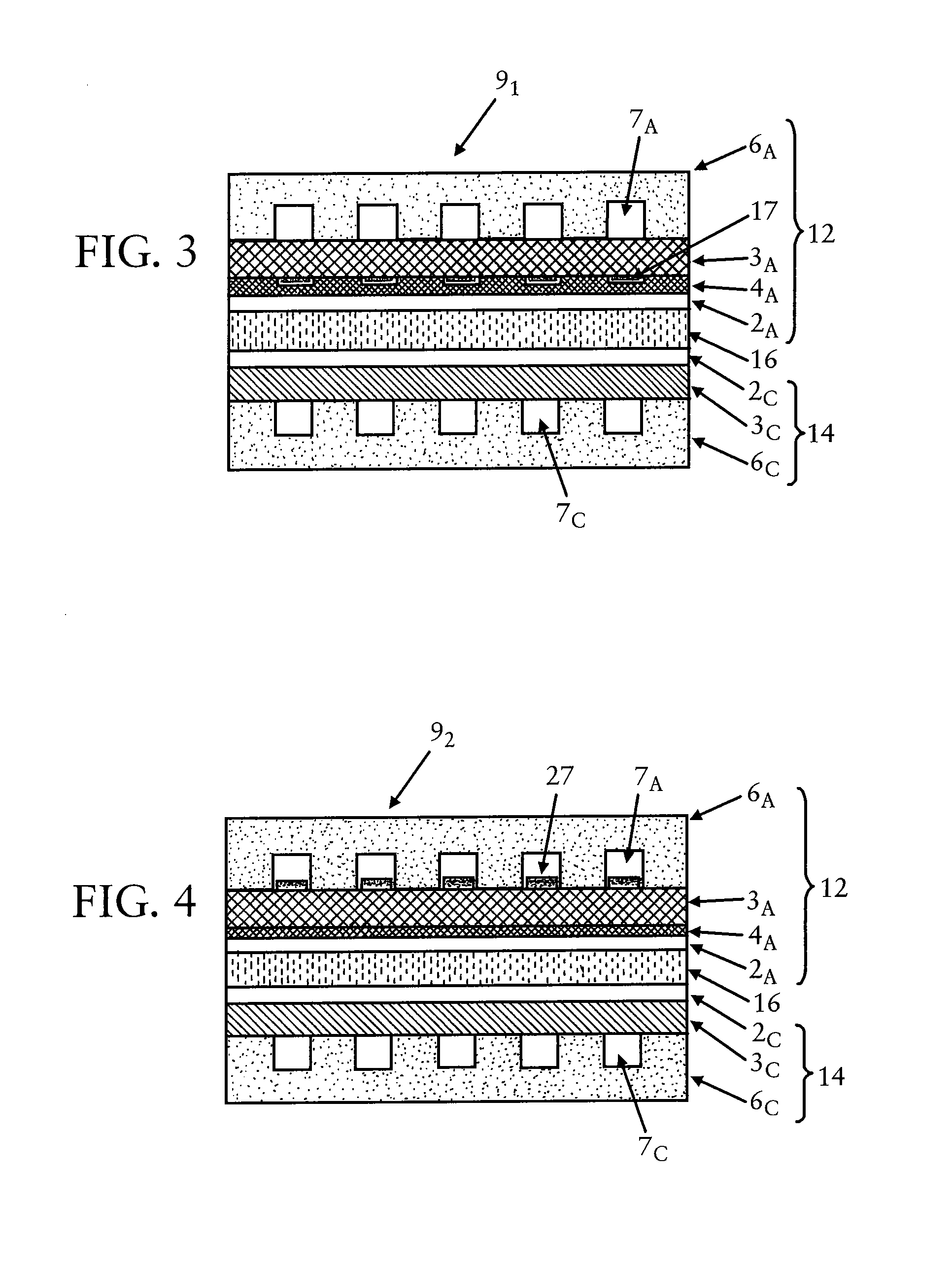Anode electrodes for direct oxidation fuel cells and systems operating with concentrated liquid fuel
a fuel cell and direct oxidation technology, applied in the field of electrodes/electrode assemblies for direct oxidation fuel cells and dofc systems, can solve the problems of parasitic power loss, methanol partly permeates the membrane electrolyte, and reducing the system energy density,
- Summary
- Abstract
- Description
- Claims
- Application Information
AI Technical Summary
Benefits of technology
Problems solved by technology
Method used
Image
Examples
Embodiment Construction
[0047]The present disclosure relates to high power conversion efficiency, DOFC and systems operating with highly concentrated fuel, e.g., DMFC's and DMFC systems, and electrodes / electrode assemblies therefor.
[0048]Referring to FIG. 1, schematically shown therein is an illustrative embodiment of a DOFC system adapted for operating with highly concentrated fuel, e.g., a methanol-based DMFC system 10, which system maintains a balance of water in the fuel cell and returns a sufficient amount of water from the cathode to the anode under high-power and elevated temperature operating conditions. (A DOFC / DMFC system is disclosed in co-pending, commonly assigned U.S. patent application Ser. No. 11 / 020,306, filed Dec. 27, 2004).
[0049]As shown in FIG. 1, DMFC system 10 includes an anode 12, a cathode 14, and a proton-conducting electrolyte membrane 16, forming a multi-layered composite MEA 9. Typically, a fuel cell system such as DMFC system 10 will have a plurality of such MEA's in the form o...
PUM
| Property | Measurement | Unit |
|---|---|---|
| temperatures | aaaaa | aaaaa |
| thickness | aaaaa | aaaaa |
| temperature | aaaaa | aaaaa |
Abstract
Description
Claims
Application Information
 Login to View More
Login to View More - R&D
- Intellectual Property
- Life Sciences
- Materials
- Tech Scout
- Unparalleled Data Quality
- Higher Quality Content
- 60% Fewer Hallucinations
Browse by: Latest US Patents, China's latest patents, Technical Efficacy Thesaurus, Application Domain, Technology Topic, Popular Technical Reports.
© 2025 PatSnap. All rights reserved.Legal|Privacy policy|Modern Slavery Act Transparency Statement|Sitemap|About US| Contact US: help@patsnap.com



